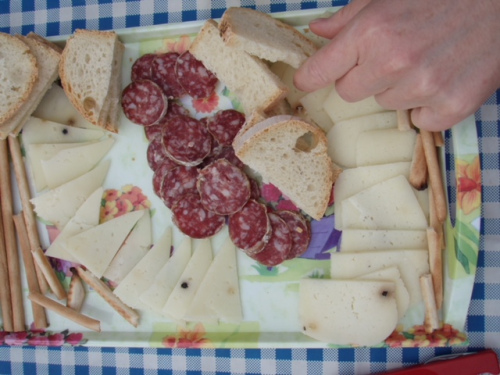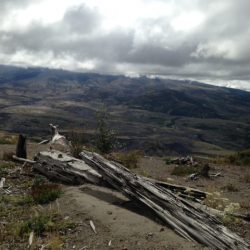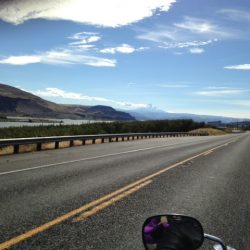Good morning, everyone,
Today I am thinking of San Gimignano. This is one of the hill towns of Tuscany. True to its designation, there are hardly any flat places in this town.
To get there, one would take a bus from Florence, change buses in Poggibonsi. You might have to wait about a half hour for the next bus, but you will have time for a cappuccino at the little cafe in the bus/train station. That is about an hour and a half trip, and a pleasant one. San Gimignano is probably the most accessible of all the hill towns, so it is a busy place. I have never taken the train to Poggibonsi, as I would still have to take the bus up the hill to San Gimignano. My bus ticket gets me all the way to San Gimignano.
Once you get to San Gimignano and get off the bus, you walk through a stone archway, up an old stone street, until you come to the main piazza.
As you walk through town, don’t expect any flat ground, for there isn’t any…well, in front of the restaurants where the tables are set up, that is pretty flat. But most of the time, you will be either walking uphill or downhill. The picture above is deceiving, for it really is going uphill.
This is a city of towers. There are 14 towers still standing, surviving from the 13th century. Tourists can now climb one of the towers. I tried it once, and had to turn back, as the staircase was built of see-through steel grating, and as the stairs spiraled up and up and up, it scared the heck out of me to look down the way I had traveled, and I could see the stone floor so far below me.
You can see the people on the tower on the right. If you don’t have a fear of heights, like I do, this is a marvelous experience, to be able to look over the countryside, and if the weather is absolutely clear, you can see all the way to Florence, for that city is only 25 miles away, as the crow flies, I do believe.
San Gimignano is busy, as I said, for many tourists are there in the daytime. I would love to stay overnight there one of these trips, and see how it feels in the evening and I would enjoy the quiet of the nighttime up there.
When I am in San Gimignano, I find places like this. I don’t feel the need to shop, unless it is at a shop where I can buy the salami that is made from the cinghiale, the wild boars that roam in the countryside nearby. That is one cold cut that I really enjoy.
However, for the most part, I wander through the cobblestone streets, through the tunnels, up the hills, and find neat little staircases.
At the main piazza, appropriately named Piazza dell Cisterna, there is the old well. This used to be the gathering spot for the locals, for most people had to come there to draw their water. It still seems to be the gathering spot for tourists, as it makes a perfect Meeting Point. Everyone should know where the well is.
There are many good restaurants and cafes in San Gimignano. There are gelato shops as well, and as I mentioned before, shops that sell the salami and cheeses. This town is also noted for its very good white wine, Vernaccia di San Gimignano. The red wine from this area is not so tasty; if you are a red wine drinker, order a Chianti from the other side of Tuscany, the area between Florence and Siena.
Some of the salami with different cheeses and grissini, the little thin bread sticks. So yummy.
I hope I have given you a glimpse of San Gimignano; enough of a glimpse that you will want to go see this town for yourself. Despite this being such a touristy town, it still retains the old world feel, and if you venture through town, go up to the Rocco, a view point that has you looking south over the countryside, then go down away from the center, you will probably feel as I do, that this is a perfect hill town.
I will leave you now with this little slice of Italy. Arrivederci, until next time, when I will tell you about some other place that I love and will visit again in June.
Ciao for now,
Dolly
By Dolly Goolsby – Full Story at Dolly Travels



 Saturday I was ready to go. A friend of Patrick’s, Mike, joined us for this ride.
We headed north to Mt. St. Helens area. Although it was cloudy here, the further we went north, the more clear the sky became.
However, on reaching the highest point of the Mt. St. Helens road, the mountain still had clouds in her hair, denying us the picture of her summit.
Saturday I was ready to go. A friend of Patrick’s, Mike, joined us for this ride.
We headed north to Mt. St. Helens area. Although it was cloudy here, the further we went north, the more clear the sky became.
However, on reaching the highest point of the Mt. St. Helens road, the mountain still had clouds in her hair, denying us the picture of her summit.





 Sorrento is a lovely coastal town, nestled in the southern shore of the Bay of Naples. The city itself is narrow and long, with many hills, narrow, winding streets, walled pathways leading to Marina Piccola on the eastern side and to Marina Grande, the old Fisherman’s Village, on the western side.
Hotels in the center of town are on fairly level ground, with most of them having lush gardens and some with swimming pools. Other hotels are up on the cliffs, high above the city, but the view of the bay from those cliff side hotels are incredibly breathtaking.
Sorrento is the birthplace of limoncello, that delicious lemon liqueur. Lemon and orange groves are abundant throughout this region of Southern Italy, with lemon groves outnumbering the oranges. The trees bloom and produce fruit year round. Limoncello is made from the peel of a knobby yellow fruit, which has such an intense flavor. The seductive, addictive lemon flavor surfaces in many foods, many specialties of the region.
One of my favorite desserts: lemon sorbet with limoncello poured over, plus ice cold limoncello to sip. In the background you can see Frank’s dessert: light, airy sponge cake with lemon cream filling, topped with whipped cream and wild strawberries. It doesn’t get any better than this. These desserts were the finale for a delicious seafood dinner at our favorite restaurant in Sorrento, Ristorante Delfino in Marina Grande.
Other food specialties are cheeses made from the milk of water buffalo that are raised in the countryside south of Amalfi. These animals were originally imported from India. Now raising them iin Campania is a huge enterprise. We went to our second favorite restaurant in Sorrento, called Inn Bufalita, that specializes in all things buffalo. We had a salad made with cherry tomatoes, small balls of Bufalo mozzarella, fresh basil and arugula. That was fantastic, Frank had a buffalo steak, which did not impress him.
When we went to Paestum, I asked Raffaele, our driver, if he knew where the “buffalo roamed”. Laughing, Raffaele told me that many people have images in their minds about the milk coming from the American Bison.
“I always explain that this milk and the milk products come from the water buffalo, but somehow many people cannot connect water buffalo with this southern region of Italy”, he told me. Then he asked if I would like to see the animals.
“Of course!”, I replied. Raffaele drove us out to one of the farms. There the buffalo are kept in large enclosures, but that ensures that they only eat the food provided by the farm. Raffaele then told us that, just like clockwork, when it is milking time, the animals start heading for the milking shed.
“The buffalo are very organized and time conscious”, he said.
There you have it; my love of the food of this Amalfi-Sorrento region is one of the many reasons that I will keep returning. Most of my readers are well aware that I am an incorrigible “foodie”, so you will probably read more about food while I am on this trip.
Until next time,
Arriverderci, tutti.
Dolly
Sorrento is a lovely coastal town, nestled in the southern shore of the Bay of Naples. The city itself is narrow and long, with many hills, narrow, winding streets, walled pathways leading to Marina Piccola on the eastern side and to Marina Grande, the old Fisherman’s Village, on the western side.
Hotels in the center of town are on fairly level ground, with most of them having lush gardens and some with swimming pools. Other hotels are up on the cliffs, high above the city, but the view of the bay from those cliff side hotels are incredibly breathtaking.
Sorrento is the birthplace of limoncello, that delicious lemon liqueur. Lemon and orange groves are abundant throughout this region of Southern Italy, with lemon groves outnumbering the oranges. The trees bloom and produce fruit year round. Limoncello is made from the peel of a knobby yellow fruit, which has such an intense flavor. The seductive, addictive lemon flavor surfaces in many foods, many specialties of the region.
One of my favorite desserts: lemon sorbet with limoncello poured over, plus ice cold limoncello to sip. In the background you can see Frank’s dessert: light, airy sponge cake with lemon cream filling, topped with whipped cream and wild strawberries. It doesn’t get any better than this. These desserts were the finale for a delicious seafood dinner at our favorite restaurant in Sorrento, Ristorante Delfino in Marina Grande.
Other food specialties are cheeses made from the milk of water buffalo that are raised in the countryside south of Amalfi. These animals were originally imported from India. Now raising them iin Campania is a huge enterprise. We went to our second favorite restaurant in Sorrento, called Inn Bufalita, that specializes in all things buffalo. We had a salad made with cherry tomatoes, small balls of Bufalo mozzarella, fresh basil and arugula. That was fantastic, Frank had a buffalo steak, which did not impress him.
When we went to Paestum, I asked Raffaele, our driver, if he knew where the “buffalo roamed”. Laughing, Raffaele told me that many people have images in their minds about the milk coming from the American Bison.
“I always explain that this milk and the milk products come from the water buffalo, but somehow many people cannot connect water buffalo with this southern region of Italy”, he told me. Then he asked if I would like to see the animals.
“Of course!”, I replied. Raffaele drove us out to one of the farms. There the buffalo are kept in large enclosures, but that ensures that they only eat the food provided by the farm. Raffaele then told us that, just like clockwork, when it is milking time, the animals start heading for the milking shed.
“The buffalo are very organized and time conscious”, he said.
There you have it; my love of the food of this Amalfi-Sorrento region is one of the many reasons that I will keep returning. Most of my readers are well aware that I am an incorrigible “foodie”, so you will probably read more about food while I am on this trip.
Until next time,
Arriverderci, tutti.
Dolly
 Early Tuesday morning, under leaden gray skies that seemed to hover over the nearby fields and the tarmac of Roma Fiumincino airport, our plane landed. The pilots had done a fine job, getting us to Rome 45 minutes ahead of schedule. After gathering our luggage, we took a a cab to our hotel. We were too early to check in, so we put our luggage in the hotel storeroom and set off to see the city.
We walked to Piazza Venezia, found a table at an outdoor cafe and sat down to enjoy the never-ending show of traffic, pedestrians dodging the vehicles, a policeman blowing his whistle that no one heeded. We had a good view of the Vittorio Emmanuel Monument as well. Many Italians say that the monument is too ornate for this area, right by the Roman Forum and the Capitoline Hill. I like it, though.
One can go inside, pay to go to the roof (Roma dal Cielo, Translated as Rome from the Sky). This is one of the best places to get a view of the entire city of Rome. There are plaques around the walls of this rooftop, to tell one what you are seeing, and remind you that you are right in the center of Ancient Rome. All those piles of rocks inside the fenced-off areas below are the remains of the buildings of the greatest empire of all time.
When we tired of people watching, we walked back to our hotel. We stopped for lunch along the way, had a pizza and a salad, and a large bottle of water. When we arrived at our hotel and got checked in, it was almost 4:00 p.m. We had been up for about 30 hours by then; therefore, my rule to not take a nap on the first day went right out the window. We showered, got into our jammies and never left the hotel again that day.
The next day, we were up early, had breakfast and kept our touring to the neighborhood. I needed to buy train tickets for the rest of our trip, so we spent a couple hours in the train station. Then we went to the National Museum, walked around neighborhoods that were familiar, and found some new places.
In the evening, in one of the newly discovered (by us), we walked down to the Monti district. This area had some trendy boutiques and many restaurants. Eventually, we decided to have dinner at a restaurant in the Piazza dei Monti. We enjoyed pasta alla Vongole, a delicious salad of beet, strawberries, ricotta cheese on a bed of watercress, plus a glass of red house wine.
Early Tuesday morning, under leaden gray skies that seemed to hover over the nearby fields and the tarmac of Roma Fiumincino airport, our plane landed. The pilots had done a fine job, getting us to Rome 45 minutes ahead of schedule. After gathering our luggage, we took a a cab to our hotel. We were too early to check in, so we put our luggage in the hotel storeroom and set off to see the city.
We walked to Piazza Venezia, found a table at an outdoor cafe and sat down to enjoy the never-ending show of traffic, pedestrians dodging the vehicles, a policeman blowing his whistle that no one heeded. We had a good view of the Vittorio Emmanuel Monument as well. Many Italians say that the monument is too ornate for this area, right by the Roman Forum and the Capitoline Hill. I like it, though.
One can go inside, pay to go to the roof (Roma dal Cielo, Translated as Rome from the Sky). This is one of the best places to get a view of the entire city of Rome. There are plaques around the walls of this rooftop, to tell one what you are seeing, and remind you that you are right in the center of Ancient Rome. All those piles of rocks inside the fenced-off areas below are the remains of the buildings of the greatest empire of all time.
When we tired of people watching, we walked back to our hotel. We stopped for lunch along the way, had a pizza and a salad, and a large bottle of water. When we arrived at our hotel and got checked in, it was almost 4:00 p.m. We had been up for about 30 hours by then; therefore, my rule to not take a nap on the first day went right out the window. We showered, got into our jammies and never left the hotel again that day.
The next day, we were up early, had breakfast and kept our touring to the neighborhood. I needed to buy train tickets for the rest of our trip, so we spent a couple hours in the train station. Then we went to the National Museum, walked around neighborhoods that were familiar, and found some new places.
In the evening, in one of the newly discovered (by us), we walked down to the Monti district. This area had some trendy boutiques and many restaurants. Eventually, we decided to have dinner at a restaurant in the Piazza dei Monti. We enjoyed pasta alla Vongole, a delicious salad of beet, strawberries, ricotta cheese on a bed of watercress, plus a glass of red house wine.
